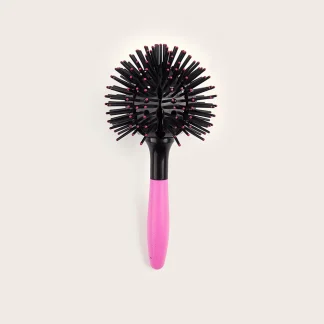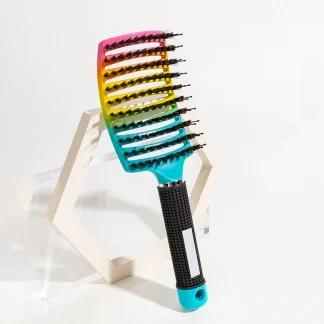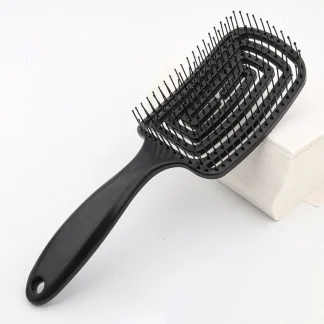Stylers for Unruly Tresses: Taming the Wild, Honoring the Natural
The frizzy hair brush occupies a unique space in the tress-care cosmos—not merely a tool of grooming, but an instrument of balance between discipline and acceptance. Designed to detangle, smooth, and enhance the texture of unruly strands, the grooming aid for flyaway-prone locks has evolved alongside cultural attitudes toward natural coiffures. In every stroke, it tells a story of power, resistance, and style. Though puffiness was once cast as an enemy to tame, the modern styler now walks a finer line: managing volume while honoring the authentic texture of hair that refuses to conform.
Origins of Unmanageable Strands and the Early Need for Control
Unruliness, by definition, refers to strands that deviate from the surrounding pattern—whether by dryness, humidity, or curl misalignment. In early civilizations, the appearance of flyaways was often linked to climate and social class. In the arid lands of Mesopotamia and Egypt, where both curly and coily tresses were common, implements like early combs and bristle-bound sticks helped manage hair textures affected by environmental dryness. The goal was not necessarily to straighten, but to control the halo of puffiness that came with daily life.
In Greco-Roman societies, mane texture began to play a more symbolic role. Waves and curls were celebrated, but uniformity was prized. Locks were groomed with fine tools made from bronze or ivory, with an emphasis on creating cohesion across the scalp. These early implements for “taming the wild” laid the groundwork for the eventual specialization of stylers designed to address what we now call unruly textures.
The Renaissance and Refinement of Tools for Textured Manes
During the Renaissance, flyaway tendencies were framed through the lens of femininity. Loose ringlets and soft textures were fashionable, but puffiness and unruly strands were not. Hair brushes became more refined—constructed with natural boar bristles, capable of smoothing the outer hair cuticle and distributing natural oils. These grooming aids offered a then-luxurious solution to the age-old issue of unmanageable manes: nourishment through grooming. The frizzy hair brush, in its essence, began to take a more defined form.
Meanwhile, in other parts of the world, textured coiffures were embraced as they were. Indigenous cultures in Africa, Polynesia, and the Americas developed their own detangling methods—often through hand-carved combs, fiber-bound implements, and oiling rituals passed down generations. These approaches didn’t just control unruliness—they defined it as part of the tresses’ character.
Industrial Revolution: The Rise of the Modern Grooming Aid for Flyaway Locks
The 19th century marked a pivotal moment in the evolution of hairbrushes. In 1854, Lyda Newman, a Black American inventor, patented an improved hairbrush that allowed for easier cleaning and better airflow—two features that proved immensely useful for textured and flyaway-prone locks. Around the same time, Mason Pearson introduced the iconic boar-bristle cushion styler, which quickly became a favorite among those battling dryness and static. Both innovations reflected a growing understanding of tress behavior under stress—humidity, dryness, and daily manipulation.
With industrial production came affordability, and suddenly, the battle against unmanageable strands became a household affair. Frizzy hair brushes, or implements designed to smooth hair shafts, massage scalps, and add shine, were marketed across Europe and the Americas. The grooming tool for puffy textures emerged not as a niche luxury, but as a common necessity.
Twentieth Century Shifts: From Conformity to Celebration of Natural Texture
The early to mid-20th century saw unruliness treated as something to conquer. As straight, glossy styles dominated fashion magazines and Hollywood screens, hair stylers were built with tighter bristles and sleek finishes to flatten texture. Nylon bristles and vented designs entered the scene, facilitating faster drying and smoother finishes—perfect for blowouts that erased flyaways from existence.
But as the Civil Rights Movement unfolded in the 1960s and 70s, cultural conversations around coiffure texture changed. The Afro became a political statement—bold, proud, and unapologetically embracing its natural volume. In this new light, what was once called frizz was not a flaw, but a feature. Brushes adapted to this ethos. The pick and the wide-tooth detangling implement emerged as essential tools for separating curls without destroying fullness. Instead of fighting unruliness, the focus turned to defining it.
Today’s Grooming Implements for Puffy Hair: Harmony Over Control
In today’s haircare world, the frizzy hair brush serves a more nuanced role. Rather than erasing texture, it is designed to manage it with integrity. Modern stylers feature flexible bristles that minimize breakage, vented backs for even drying, and anti-static technologies that reduce friction. Paddle brushes with cushioned bases and ionic components help tame puffiness without flattening the hair’s natural body.
For those with curls, coils, or waves, detangling implements with staggered bristles glide through knots without disrupting curl formation. These grooming aids are built to work with moisture, often used in the shower alongside conditioners. Some even feature palm-held ergonomic designs for better grip and control—reflecting how intimately tied the act of brushing is to self-care.
In essence, the tool for managing unruly strands has transitioned from an instrument of domination to one of dialogue. It listens to tresses, rather than ordering them. It coaxes shine without demanding obedience.
Unruliness as a Style Choice
Interestingly, in recent years, a less controlled look has made a comeback—not as a problem, but as a stylistic statement. The rise of the “undone” aesthetic, championed by runway stylists and influencers, embraces flyaways, volume, and the halo effect. Frizzy textures now grace magazine covers, red carpets, and editorial spreads as signs of authenticity and rebellion against airbrushed perfection.
Hair brushes for frizzy hair, in turn, now include diffusing stylers for curl drying, teasing implements for volume amplification, and mixed-bristle designs for balancing smoothness with texture. What was once brushed away is now brushed into the spotlight.
Cultural Symbolism and Identity in Managing Textured Coiffures
For many, especially within Black, Latinx, and South Asian communities, grooming flyaway-prone tresses is tied to ritual, resilience, and self-discovery. It is a moment of bonding—between mothers and daughters, stylists and clients, friends and self-image. The brush, chosen with care, becomes an ally in this journey. Whether taming unruliness before a presentation or coaxing curls to life on a Sunday morning, the act of using this tool speaks of tenderness and pride.
Conclusion: The Quiet Power of the Styler for Unruly Locks
The frizzy hair brush has never been just a tool. It is a symbol of how beauty standards evolve—and how individuals reclaim their reflection. From ancient grooming rituals to modern detangling innovations, this implement carries the story of texture, identity, and change. Whether used to sleek down or lift up, the grooming aid for puffy manes honors hair that refuses to be silenced. It respects volume, preserves structure, and smooths only as much as it must.
In a world still learning to celebrate natural beauty, the styler for unruly tresses stands as both a practical essential and a poetic reminder: sometimes, the wild deserves to be witnessed—not erased.
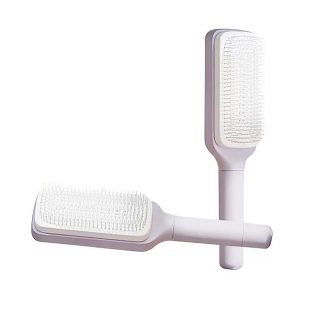
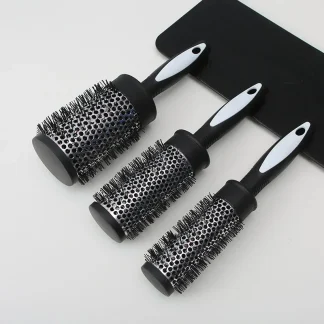
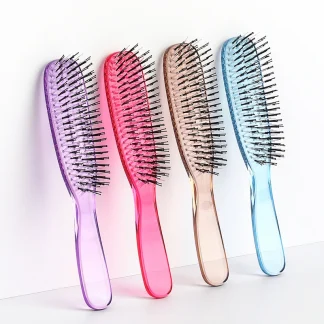
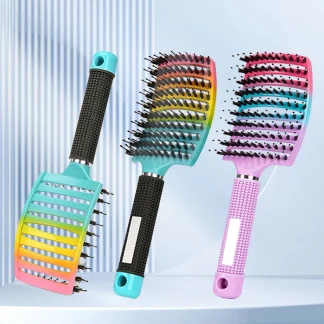
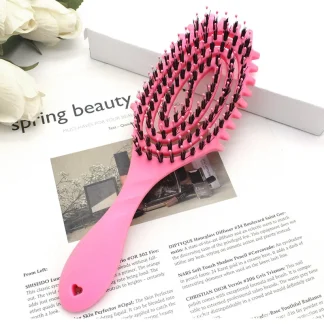
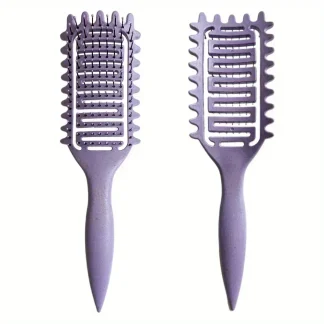
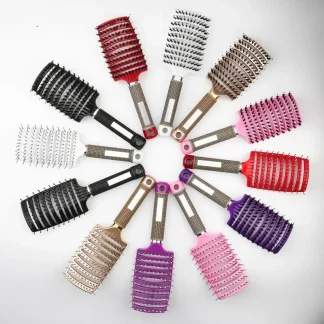 + 7
+ 7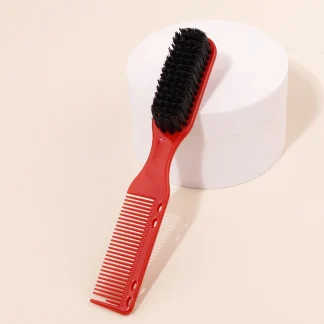
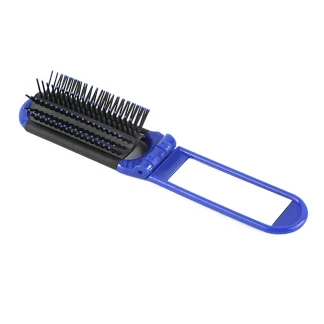
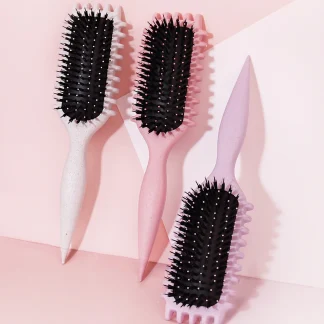
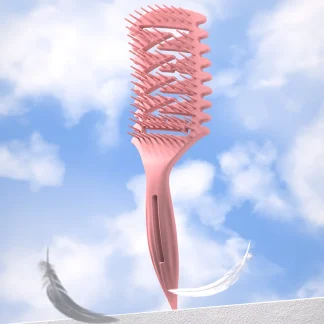

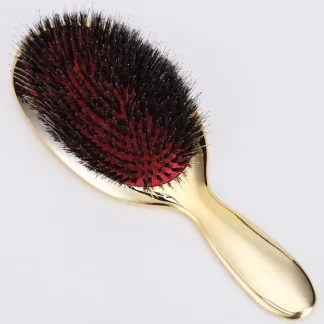
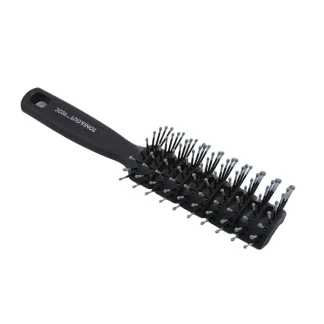
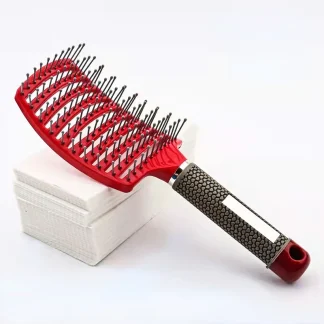
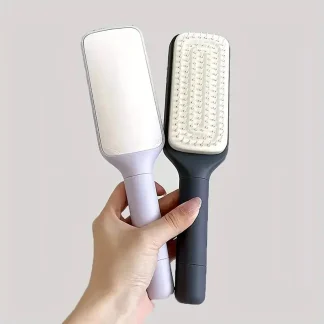
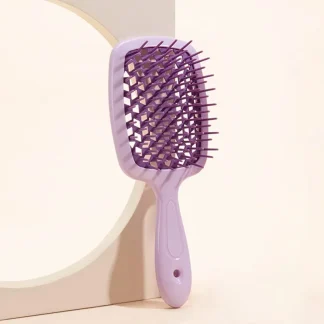 + 5
+ 5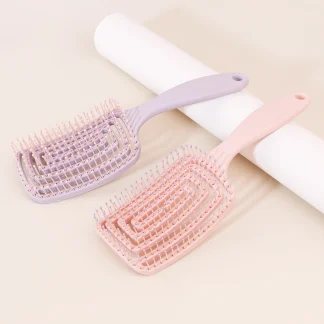
 + 6
+ 6